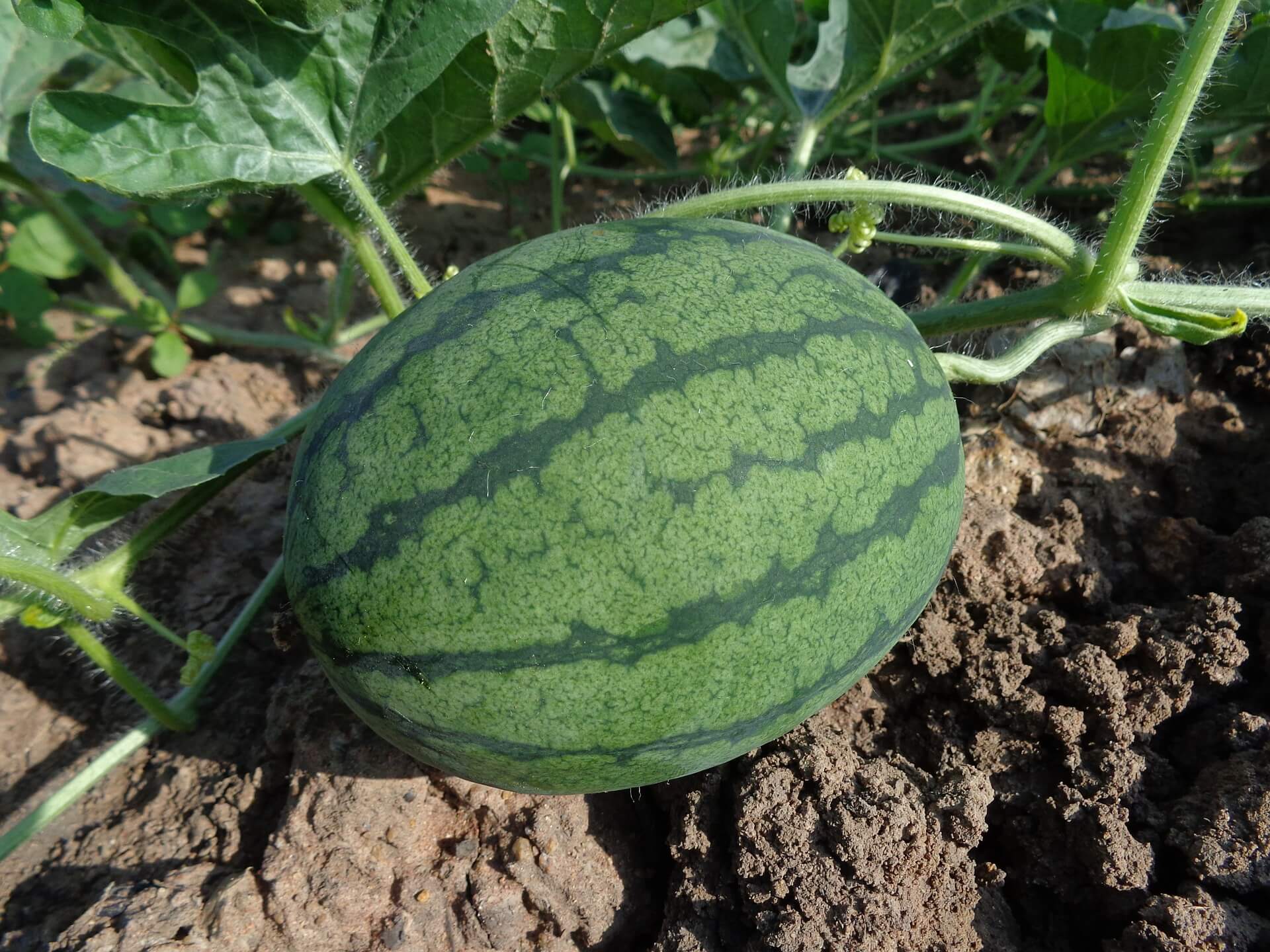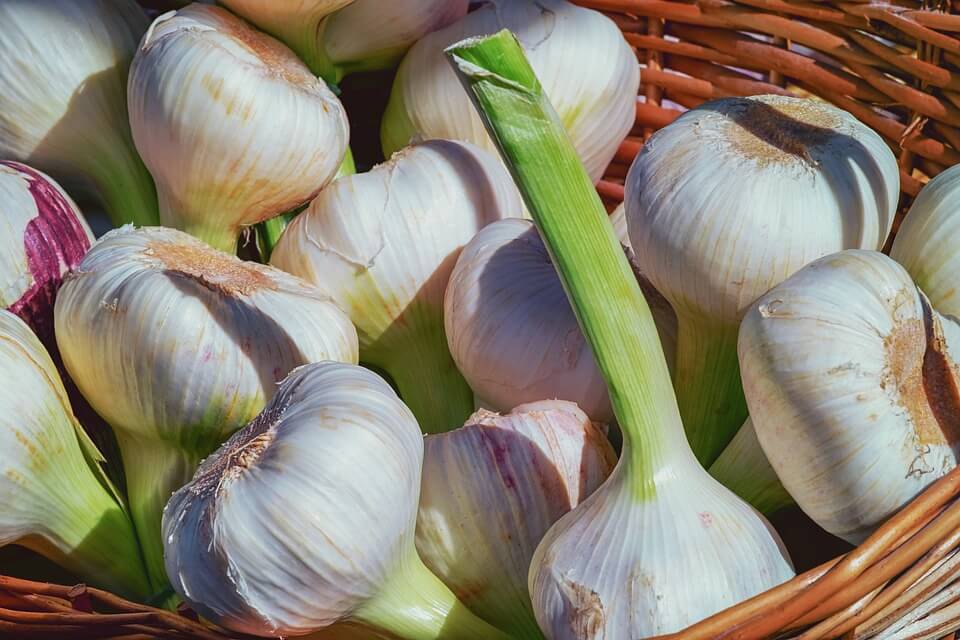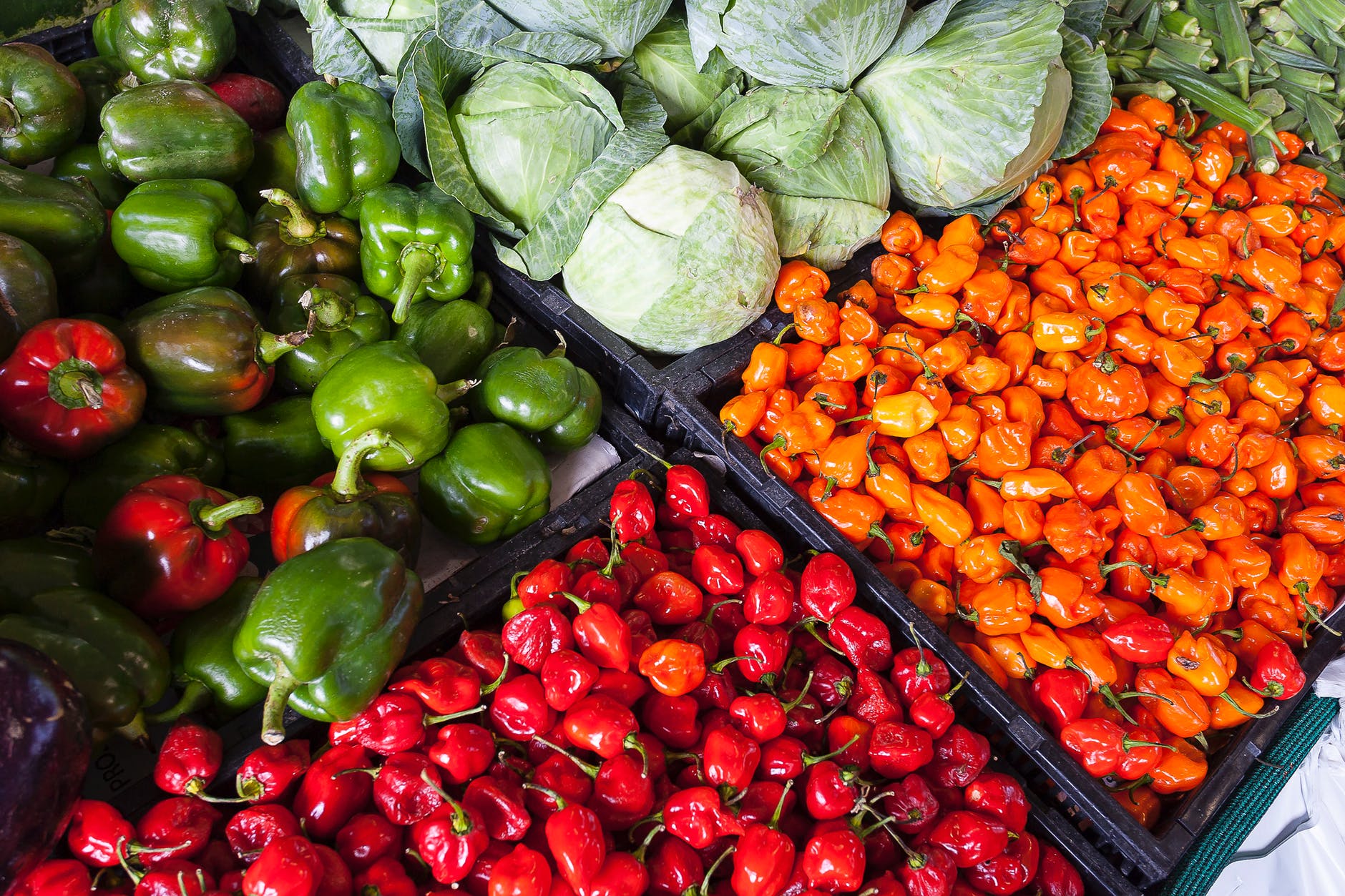Updated on July 5, 2024: Added detailed sections on pest and disease management, including common pests, common diseases, and effective pesticides and fungicides for tomato farming in Kenya.
Before I take you into nitty-gritty details about tomato farming in Kenya I will first expose you to vitamin C, Vitamin A, and lycopene nutrients which are highly concentrated in all tomato varieties.
This nutrient composition uniquely makes tomatoes to significantly reduce cancer risks. From this revelation, I hope you have a better reason to include tomatoes in almost all your cuisines. For health and taste reasons of course.
In 2017 The International Journal on vegetable science carried out research on the scope of tomato farming in Kenya. The report that was released showed four pressing points on Tomato Farming in Kenya that prove useful. Below are the highlights of the report.
- The average Tomato farming land was 0.13 and 1.5 ha.
- Soil management is a major constraint in farming tomato farmers in Kenya.
- Nematode infestation (Plant disease ) is also a notable challenge to Kenya’s tomato farmers.
- The majority of Kenya’s tomato farmers use Diammonium phosphate (DAP) for planting and Calcium Ammonium Nitrate (CAN) for top dressing.
Note: It would be strategic to draw creative solutions geared towards improving tomato farming in Kenya by considering the above four leading points above. This is because they carry a national scope of Tomato farming in Kenya.
Types of Tomatoes Varieties Found In Kenya
There are eight major types of tomatoes found in Kenya. I bet you have noticed a difference if you’re a regular grocery person.
Here we go, and the eight most eaten tomato varieties in Kenya are:
- Heil Room tomatoes
- Red Beefsteak Tomatoes
- Cheery Tomatoes
- Cocktail Tomatoes
- Grape Tomatoes
- Roma Tomatoes
- Tomatoes in the vine
- Green Beef Steak Tomatoes
Heil Room Tomatoes
These are the type of tomatoes that can be described as indigenous because they have been passed on from one generation to the other.
This type of tomato is ideal for making sandwiches and salads in addition to being perfect for normal cooking.
To get a perfect taste from the Heil Room Tomatoes, it is advised to add a little olive oil and water when serving them raw.
Characteristics of the Heil Room Tomatoes
- Colors can range from dark to bright red.
- Some can have a sweet taste while others can be tangy.
- Have a firm texture.
- Are so juicy.
Red Beefsteak Tomatoes
If you ever notice any large tomatoes, which are larger than the average ones, then know that you’re handling the Red Beefsteak Tomatoes.
Also known as the king of tomatoes the Red Beefsteak Tomatoes have an average taste ideal for any course without being overpowering.
Characteristics of the Red Beefsteak Tomatoes
- They are extra large
- Have a soft and firm texture
- Flavourful
- Bright red color when ripe
Cheery Tomatoes
Well, the cherry tomatoes are the most diverse varieties that are out there. This is because they come in different colors and shapes. For this reason, it takes an expert to identify them.
You may also like: Dairy Farming in Kenya – 2020 update
Characteristic of the Cherry Tomato
- Sweet
- Tangy (have a strong flavor)
- Juicy
Cocktail Tomatoes
Out of culinary experience, the cocktail tomatoes do well when there is an increase in heat. This makes them ideal when roasting meat or preparing meals that need heat.
Characteristics of the Cocktail Tomatoes
- Have relatively fewer seeds than normal tomatoes.
- Are meaty.
- Their walls or outside covering is again, relatively softer when compared to other tomato types.
Grape Tomatoes
The grape tomatoes, just like the cherry tomatoes come in a variety of colors and even sizes sometimes.
They retain a thick flesh when cooked, unlike many other tomato varieties that shrink.
You are much welcomed to have the Grape tomatoes in raw form as they still maintain a unique taste.
Characteristics of the Grape Tomatoes
- Maintain good flesh even after cooking.
- Eaten raw, cooked, turned into a paste or even dried up and packaged.
- Are sweet
- They do maintain a great sense of aroma.
Roma Tomatoes
The Roma tomatoes are ideal for making stew and soup.
This tomato variety results in delicious and tangy soups and stews.
Characteristics of the Roma Tomatoes
- Has good flesh amount.
- Very tasty.
- Stingy (Produces a prolonged aroma )
- well structured.
Tomatoes in the vine
Well, a vine is like a branch in a tree that holds the plant. As such the word Tomatoes in the vine indicates the manner of leaving tomatoes to grow on the branch of the plant until they ripen.
Characteristics
- Hold moisture when cooking
- Very firm
- Have a fresh unique taste
- Very juicy
- Thick walls
Check out: Understanding Crop Farming in Kenya (Complete Guide )
Green Beef Steak Tomatoes.
Not all tomatoes appear red to show they are ripe. Some tomatoes like the Green Beef Steak tomatoes look green when ripen.
The uniqueness of the Green Beef Steak tomatoes surpasses its physical appearance and extends to its uses by being multi-diverse in use.
Characteristics of the Green Beef Steak Tomatoes
- Very green in color (bright ) even after they ripe.
- They are round, firm and mostly in large sizes.
- used for many culinary purposes.
- Have a crunchy taste when eaten raw.
Now that we have had a taste of the types of tomatoes farmed in Kenya, I believe that you’re in a better position to decide which type of tomatoes fit your culinary and business needs while in Kenya.
Related reading: A simple analysis of Onion Farming in Kenya.
So, straight away we will now go and explore the challenges facing tomato farming in Kenya so that we can get a deeper understanding of this golden crop.
Challenges Facing Tomato Farming in Kenya
When analyzing the challenges that face tomato farming in Kenya we have to make the effort of analyzing the small details that involve the tomato planting all the way to harvesting.
Even though a farmer might have experience in general planting of crops this does not mean that they can go out there and start planting tomatoes.
Actually, applying the general planting knowledge to tomato planting is where most farmers go wrong. To ensure that you stand out, I have outlined below key mistakes that farmers make when planting tomatoes.
Mistakes Farmers Make When Planting Tomatoes
Weak tomato seedlings
Seedlings in the soils that don’t cement properly expose seedlings to be washed away by running water or fallen by wind movements.
Poor soil management
Collecting anything that looks like organic manure to top-dress during tomato planting highly exposes tomato seedlings to diseases.
This is because tomato seedlings are very delicate. Therefore, farmers should ensure they use organic manure that is nutritious and not ‘dirt’.
Wrong measurements
Plant tomatoes without focussing on the right measurements between each tomato seed lead to low yields.
When tomatoes are close to each other then the competition for nutrients from the soil and sunlight becomes stiff and this might disadvantage some seedlings.
Equally important, when you plant tomatoes closely the potential for disease and pest infection increases in case one plant is affected. Always consult on pacing from your seedling supplier.
Simply by planting the wrong type of tomatoes
This is a simple logic to understand but often missed by many tomato farmers. You need to understand that each tomato does well in the right type of soil that they match with.
So, most tomato farmers in Kenya go out there and buy tomato seeds without consulting on the type of soil in their land that matches with the right tomato seed.
As a result, they experience poor growth rate that further leads to low yields. Note that each tomato seed goes with the ideal PH soil environment.
Shading your tomato seedlings
When tomato seeds are actively growing into a plant. As such they require a lot of energy to go through this intense process.
One important stage for these seedlings to make energy is through photosynthesis. As such, tomato seedlings need a minimum of seven hours to make get average glucose. Shading tomato seedlings from sunlight limits their full growth potential.
Not pruning tomato plants
This is a quick one, not pruning tomatoes limits air circulation on the plant structure and also waste plant food to leafy pats that are not needed. All these limit the full potential growth of tomatoes.
Using too much fertilizer.
Here the rule of diminishing results does apply. Even though using fertilizer boosts nutrients in tomato plants, going overboard could actually be poisoning the plants.
From the above challenges in regards to tomato planting, I am confident that you now have a better understanding, as a beginner on tomato planting on how to engage in this venture productively.
Leading Tomato Farming Areas in Kenya
Central Kenya, Mount Elgon region, RiftValley like in Nakuru and Naivasha are some of the regions in Kenya that lead in tomato farming.
There is a huge potential for areas like western Kenya to adopt tomato farming if meaningful consultation is done since these areas are fertile.
Areas like North Eastern and Eastern parts of Kenya which are arid and semi-arid can embrace tomato farming by the use of greenhouses and irrigation technology.
Step by step Guide to Planting Tomatoes
I wouldn’t call this a day without taking you through a guide on how to plant tomatoes. Below are the steps that you should know.
How do tomatoes grow in Kenya?
- Prepare the soil by removing the weed and applying manure or fertilizer in a good time. This should be done at least two weeks before actual planting.
- Measure the spacing on the ground on how seedlings should be planted from each other. There is no standard spacing as every manufacturer advises differently.
- Remove the seedlings from the seedbed, then plant on the holes that were prepared on step 2.
- Add water to the newly planted tomato seedlings.
- Fence the tomato farm to ensure that no chickens, animals or kids come into the field.
- Ensure that the farm has no shade. the tomato seedlings should at least have 7 hours of sunshine.
Related: The Truth behind successful fruit farming in Kenya.
Battling Pests and Diseases
Tomatoes are prone to various pests and diseases that can affect your harvest. Knowing how to identify and manage these problems is essential for a successful crop.
Common Tomato Pests
Whiteflies
Whiteflies are tiny, winged insects that cluster on the undersides of leaves, causing yellowing and reduced plant vigor. To control whiteflies, use insecticidal soap, introduce natural predators, and consider chemical control with Belt insecticide.
Tuta absoluta
Tuta absoluta, also known as the tomato leafminer, causes mining trails on leaves and damages fruits. To manage this pest, introduce natural predators like Trichogramma wasps and consider chemical control with Dynamec insecticide.
Thrips
Thrips are slender, winged insects that feed on leaves, causing silvering or bronzing of the foliage. Control thrips by using insecticidal soap, neem oil, or introducing predatory mites.
Spider Mites
Spider mites are tiny arachnids that create fine webs on the undersides of leaves, causing stippling and discoloration. To control spider mites, apply neem oil, use predatory mites, and ensure proper plant hygiene.
Common Tomato Diseases
Early Blight
Early blight appears as dark lesions with concentric rings on lower leaves, leading to defoliation. Control early blight with crop rotation, fungicides containing copper, and proper sanitation.
Late Blight
Late blight causes dark, water-soaked lesions on leaves, often spreading rapidly during wet conditions. To manage late blight, use fungicides, practice good air circulation, and remove affected plant parts.
Downy Mildew
Downy mildew manifests as yellow spots on upper leaf surfaces and a downy growth on the undersides. Control downy mildew by applying fungicides, ensuring proper spacing, and providing adequate ventilation.
Leaf Rust
Leaf rust presents as small, reddish-brown pustules on the undersides of leaves. Manage leaf rust with fungicides containing chlorothalonil, proper sanitation, and removal of infected leaves.
Bacterial Wilt
Bacterial wilt causes wilting and yellowing of leaves, often leading to plant collapse. Control bacterial wilt by using resistant varieties, practicing crop rotation, and soil drenching with copper-based bactericides.
Choosing Effective Pesticides and Fungicides
When conventional methods fall short, selecting the right pesticides and fungicides becomes crucial for pest and disease control.
Best Insecticides in Kenya
Belt is highly effective against whiteflies, providing lasting control and is widely used in tomato farming. Dynamec, specifically formulated for controlling Tuta absoluta, is a valuable tool in managing tomato leafminers.
Top Fungicides for Disease Management
Copper oxychloride is a reliable fungicide, effective against bacterial and fungal diseases. Mancozeb is known for its broad-spectrum activity, making it effective against early blight, late blight, and downy mildew. Ridomil Gold, a systemic fungicide, is particularly effective against late blight and is commonly used in tomato farming.
Pricing of Tomatoes in Kenya
The prices of tomatoes in Kenya varies by season. Below are some of the recorded tomato prices in leading towns in Kenya.
Tomato Prices by Region in Kenya
- Nairobi City: 64Kg went for Ksh 6,400.
- Mombasa: 64 Kg saw consumers pay Ksh. 4,032.
- Kisumu: 64 kg retailed for 6,528 shillings.
Prices above prices by Price index Kenya.
From this article, I hope that you as a beginner with interest in tomato farming in Kenya now have a better understanding of the following four points;
- The places where tomatoes do well in Kenya.
- Ideal conditions for tomato farming.
- Which market towns to venture in tomato farming.
- The basics to consider when doing tomato farming in Kenya.
FAQs – Beginner’s Guide on Tomato Farming
How much do I need to start a tomato farming in Kenya?
The production cost of tomato farming varies widely and relies on numerous factors, including and not limited to location, availability of labour and inputs, experience and expertise. Therefore, expect to incur around Ksh. 25,000 to Ksh. 50,000 for land preparation.
How long does a tomato take to mature?
The life cycle of a tomato plant depends on its cultivar or variety. Small determinate fruits develop more quickly while indeterminate tomatoes, like beefsteak and many heirloom varieties, take longer. Generally, it takes from 60 to 100 days from germination to harvest.
Where is the best place to grow tomatoes in Kenya?
Tomato thrives best in low-medium rainfall with supplementary irrigation during periods of drought. Wet conditions increase disease incidence and affect fruit ripening. Tomatoes can do well in a wide range of soils, but prefers those that are high in organic matter, well-drained and a pH range of 5 – 7.5.
How many kgs of tomatoes per acre in Kenya?
In Kenya, you can harvest 35,000 kg of tomato fruits per acre. In this analysis, we assume that 85% or 30,000 kg of the Kilele F1 variety will be marketable. You can therefore earn KES 1.5 million from an acre of tomato in Kenya under proper crop care. It is after selling each kg at KES 50 per kg.
Conclusion
As you prepare to start this new venture I want to remind you to always understand that different tomato types do well in different Kenyan soils.
As we have seen, always have your market in mind long before you do the harvesting. This will help you to avoid unnecessary losses. This is because the yields come in plenty and at once. I wish you a successful tomato farming venture in Kenya.




